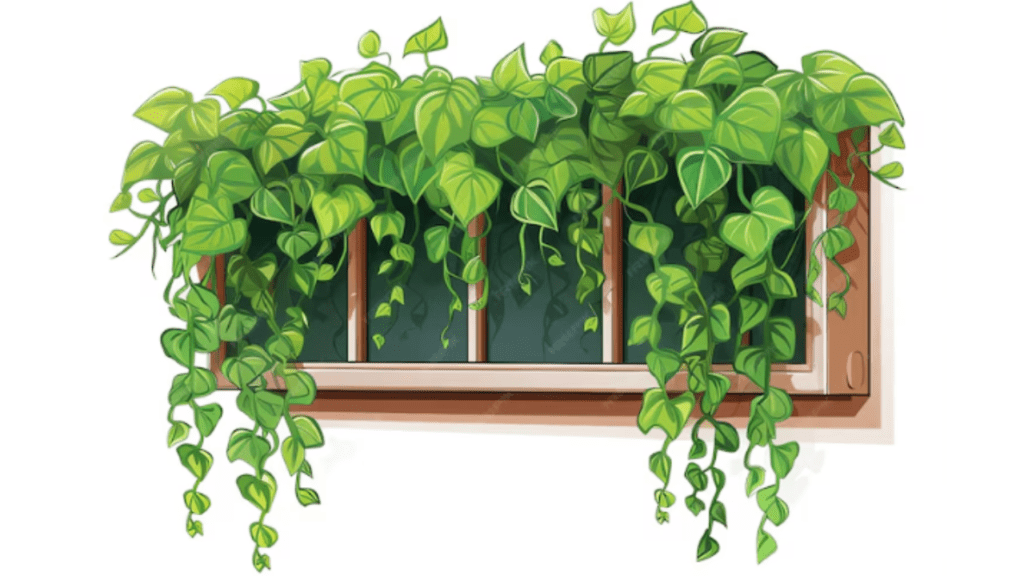
Thriving with Creeping Charlie House Plants: A Comprehensive Care Guide
Creeping Charlie house plants, also known as Pilea nummulariifolia, are a popular choice for indoor gardening enthusiasts due to their trailing vines and vibrant foliage. To ensure that your Creeping Charlie thrives, it is important to provide the right care and conditions. These plants prefer bright, indirect light and well-draining soil. Watering should be done when the top inch of the soil is dry, and the plant should be fertilized every 4-6 weeks during the growing season. Pruning can help maintain the plant’s shape and encourage new growth. With proper care, Creeping Charlie house plants can bring a touch of greenery and beauty to your home.
Proper care is essential for the healthy growth and maintenance of Creeping Charlie house plants. These plants, also known as Pilea nummulariifolia, are popular for their trailing vines and vibrant foliage, making them a desirable choice for indoor gardening. To ensure the thriving of your Creeping Charlie, it is important to provide the right care and conditions. These plants thrive in bright, indirect light and well-draining soil. It is crucial to water them when the top inch of the soil is dry, and to fertilize them every 4-6 weeks during the growing season. Pruning is also important to maintain the plant’s shape and encourage new growth. With proper care and attention, Creeping Charlie house plants can bring a touch of greenery and beauty to your home, creating a welcoming and vibrant atmosphere.
Table of Contents
ToggleSelecting the Ideal Growing Environment
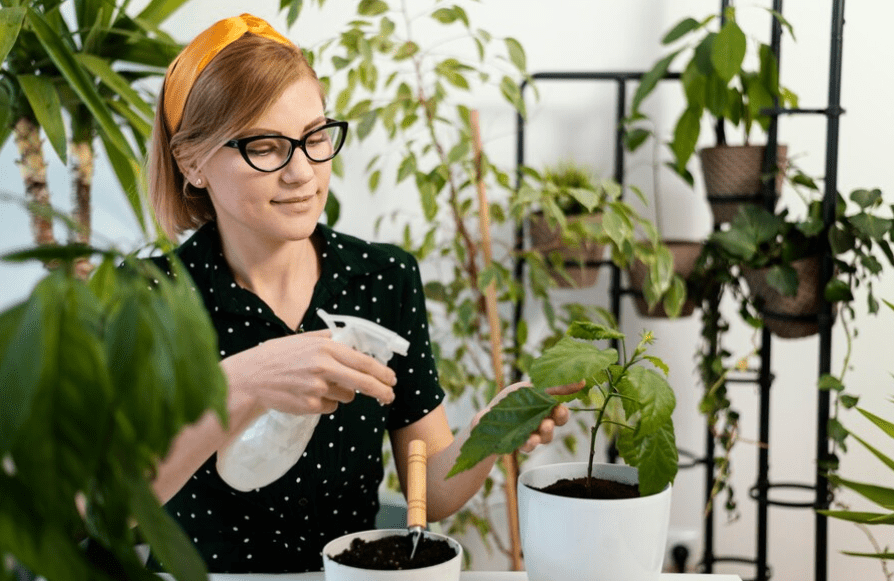
is crucial for the health and growth of Creeping Charlie house plants. These plants are known for their trailing vines and vibrant foliage, making them a popular choice for indoor gardening. To ensure the thriving of your Creeping Charlie, it is important to provide the right care and conditions. These plants thrive in bright, indirect light and well-draining soil. It is crucial to water them when the top inch of the soil is dry, and to fertilize them every 4-6 weeks during the growing season. Pruning is also important to maintain the plant’s shape and encourage new growth. With proper care and attention, Creeping Charlie house plants can bring a touch of greenery and beauty to your home, creating a welcoming and vibrant atmosphere. It is important to select the ideal growing environment for these plants to ensure their health and vitality.
A. Lighting Requirements
are crucial for the growth and health of indoor plants. Different plants have different lighting needs, and it is important to provide the right amount of light for each specific plant. For example, some plants thrive in bright, direct sunlight, while others prefer more indirect or filtered light. It is important to research and understand the lighting requirements of the specific plants you have in your home. Providing the right amount of light will help your plants photosynthesize and grow properly.
For indoor plants like Creeping Charlie, bright, indirect light is ideal. Placing them near a window where they can receive plenty of natural light, but not direct sunlight, will help them thrive. It is important to monitor the light levels in your home and adjust the placement of your plants as needed to ensure they are getting the right amount of light.
In summary, understanding the lighting requirements of your indoor plants is essential for their overall health and growth. By providing the right amount and type of light, you can create an optimal environment for your plants to thrive and enhance the beauty of your home.
1. Optimal light conditions for Creeping Charlie.
Creeping Charlie is a popular indoor plant that requires a specific amount of light to thrive. In general, bright, indirect light is best for this plant. Placing it near a window where it can receive plenty of natural light, but not direct sunlight, is ideal. If you notice that your Creeping Charlie is not growing as well as it should, it may be due to inadequate light. It is important to monitor the light levels in your home and adjust the placement of your plants as needed to ensure they are getting the right amount of light. By understanding and meeting the lighting requirements of your indoor plants, you can create an optimal environment for them to thrive and add beauty to your home.
2. How to provide adequate light for indoor cultivation.
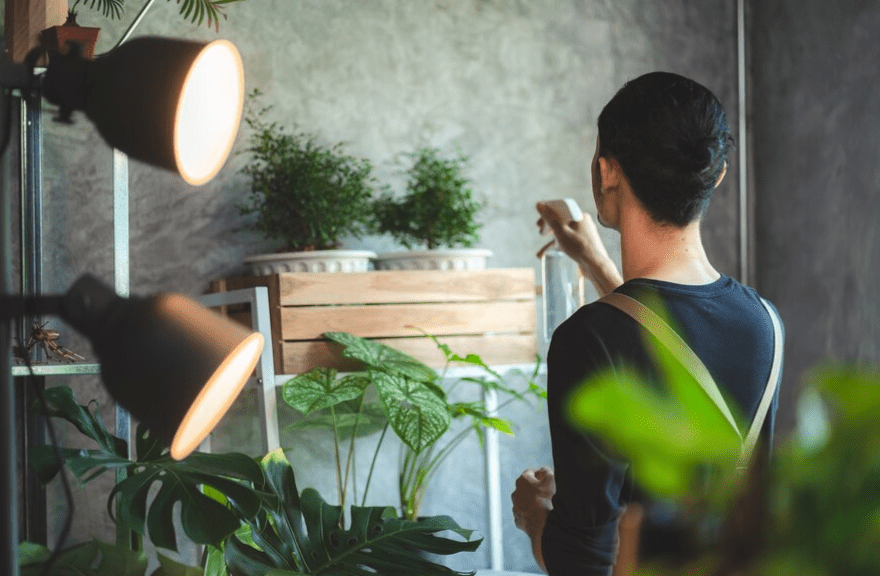
When it comes to providing adequate light for indoor cultivation, it’s important to understand the specific needs of the plants you are growing. Different plants have different light requirements, so it’s essential to research the specific needs of the plants you are cultivating. In general, most indoor plants thrive in bright, indirect light. This means placing them near a window where they can receive plenty of natural light, but not direct sunlight. However, some plants may require more or less light, so it’s important to monitor the light levels in your home and adjust the placement of your plants as needed. You can also consider using artificial grow lights to supplement natural light if your plants are not getting enough. By understanding and meeting the lighting requirements of your indoor plants, you can create an optimal environment for them to thrive and grow.
B. Temperature and Humidity Needs
are also important factors to consider when cultivating indoor plants. Most indoor plants prefer temperatures ranging from 65-75 degrees Fahrenheit during the day and slightly cooler temperatures at night. It’s important to avoid placing your plants near drafts or heat sources that could cause drastic temperature fluctuations.
In terms of humidity, many indoor plants thrive in environments with moderate to high humidity levels. You can increase humidity by misting your plants with water, placing a humidity tray nearby, or using a humidifier. However, it’s important to research the specific humidity needs of your plants, as some may prefer drier conditions.
By understanding and meeting the temperature and humidity needs of your indoor plants, you can create a favorable environment for them to flourish. It’s important to monitor these factors and make any necessary adjustments to ensure the health and well-being of your indoor plants.
1. Ideal temperature range for healthy growth.
The ideal temperature range for healthy growth of indoor plants is typically between 65-75 degrees Fahrenheit during the day, with slightly cooler temperatures at night. It’s important to avoid placing your plants near drafts or heat sources that could cause drastic temperature fluctuations, as this can stress the plants. In terms of humidity, many indoor plants thrive in environments with moderate to high humidity levels. You can increase humidity by misting your plants with water, placing a humidity tray nearby, or using a humidifier. However, it’s important to research the specific humidity needs of your plants, as some may prefer drier conditions. By understanding and meeting the temperature and humidity needs of your indoor plants, you can create a favorable environment for them to flourish. It’s important to monitor these factors and make any necessary adjustments to ensure the health and well-being of your indoor plants.
2. Strategies for maintaining appropriate humidity levels.
Maintaining appropriate humidity levels is crucial for the health and well-being of indoor plants. The ideal humidity range for most indoor plants is between 40-60%. You can increase humidity levels by misting your plants with water, placing a humidity tray filled with water and pebbles near the plants, or using a humidifier. It’s important to research the specific humidity needs of your plants, as some may prefer drier conditions while others thrive in higher humidity. To monitor humidity levels, you can use a hygrometer to measure the moisture in the air. It’s also important to ensure proper air circulation to prevent the growth of mold and mildew. By understanding and meeting the humidity needs of your indoor plants, you can create a favorable environment for them to thrive and flourish.
Creative Uses and Display Ideas

When it comes to indoor plants, there are so many creative uses and display ideas to choose from. One idea is to create a living wall by hanging a variety of plants on a vertical surface, adding a touch of nature to your home decor. You can also use plants as natural room dividers or create a mini indoor garden with a variety of plants in different shapes and sizes. Another creative idea is to display plants in unique and unconventional containers such as mason jars, vintage teacups, or even repurposed wine bottles. You can also create a terrarium to showcase a small collection of plants in a glass container, adding a whimsical touch to your space. Get creative and have fun with your indoor plant displays, as they can bring life and personality to any room in your home.
A. Hanging Baskets
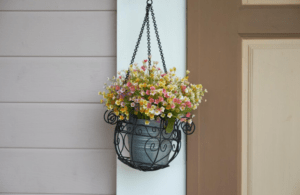
are a great way to display your indoor plants and add a touch of greenery to your home. They are perfect for small spaces and can bring color and life to any room. When choosing plants for hanging baskets, make sure to consider the amount of sunlight and humidity they need. You can mix and match different plants to create a beautiful and unique display. Hanging baskets can also be used to create a vertical garden, turning any boring wall into a stunning display of greenery. With the right care and attention, hanging baskets can be a beautiful addition to your indoor plant collection. So get creative and explore the many ways you can use hanging baskets to showcase your indoor plants!
B. Terrariums
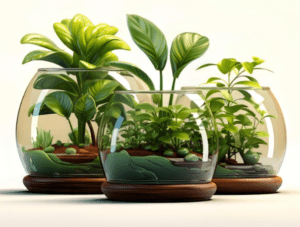
are a fantastic way to create a miniature garden inside your home. They are perfect for people who have limited space or want to add a touch of nature to their living space. You can use a variety of plants, such as succulents, air plants, or moss, to create a beautiful and low-maintenance terrarium. Terrariums come in a range of sizes and styles, so you can find one that fits your home decor perfectly. They are also easy to care for, requiring minimal watering and maintenance. With a little creativity, you can design a stunning terrarium that brings a breath of fresh air into your home. Whether you are a seasoned gardener or a novice plant enthusiast, terrariums are a fun and rewarding way to bring the beauty of the outdoors inside. So why not give it a try and create your own little green oasis?
C. Living Walls
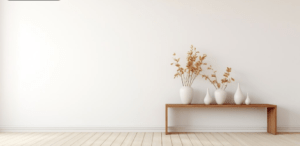
Living Walls also known as green walls, are a great way to incorporate nature into your living space. These vertical gardens are perfect for people who have limited space or want to add a touch of greenery to their home. You can use a variety of plants, such as succulents, air plants, or moss, to create a beautiful and low-maintenance living wall. They come in a range of sizes and styles, so you can find one that fits your home decor perfectly.
Living walls are also easy to care for, requiring minimal watering and maintenance. With a little creativity, you can design a stunning living wall that brings a breath of fresh air into your home. Whether you are a seasoned gardener or a novice plant enthusiast, living walls are a fun and rewarding way to bring the beauty of the outdoors inside.
So why not give it a try and create your own little green oasis? It’s a great way to add some natural beauty to your home and bring a sense of calm and tranquility to your living space. Plus, you’ll be helping to purify the air and create a healthier environment for you and your family.
In conclusion, thriving with Creeping Charlie house plants is definitely possible with the right care and attention. By following the tips and advice provided in this comprehensive care guide, you can successfully conquer the common plant pest and enjoy the beauty of your house plants. Remember to regularly check for pests, provide proper watering and sunlight, and maintain a healthy environment for your plants to thrive. With the right care, you can enjoy a flourishing indoor garden filled with beautiful, healthy plants.
Frequently asked questions And Answer
Creeping Charlie, also known as Swedish Ivy, is a trailing plant with small, round leaves that is popular for its low-maintenance nature and ability to thrive in various indoor conditions.
It’s important to water your Creeping Charlie plant regularly, keeping the soil consistently moist but not waterlogged. Allow the top inch of soil to dry out before watering again.
Creeping Charlie thrives in bright, indirect light but can also tolerate lower light conditions. Avoid placing it in direct sunlight, as this can scorch the leaves.
A well-draining potting mix is ideal for Creeping Charlie plants. You can also add some perlite or sand to the soil to improve drainage.
Fertilize your Creeping Charlie plant once a month during the growing season (spring and summer) with a balanced, water-soluble fertilizer diluted to half strength.
Creeping Charlie can be easily propagated by taking stem cuttings and rooting them in water or moist soil. Make sure to include several nodes on the cutting to encourage root development.
Keep an eye out for common houseplant pests such as aphids, spider mites, and mealybugs. Regularly inspect the plant for any signs of infestation and treat with natural or chemical remedies as needed.
Creeping Charlie is often grown as a houseplant, but it can also be grown outdoors in containers or as ground cover in shaded areas. Just be mindful of its invasive nature and potential to spread rapidly in garden beds.
